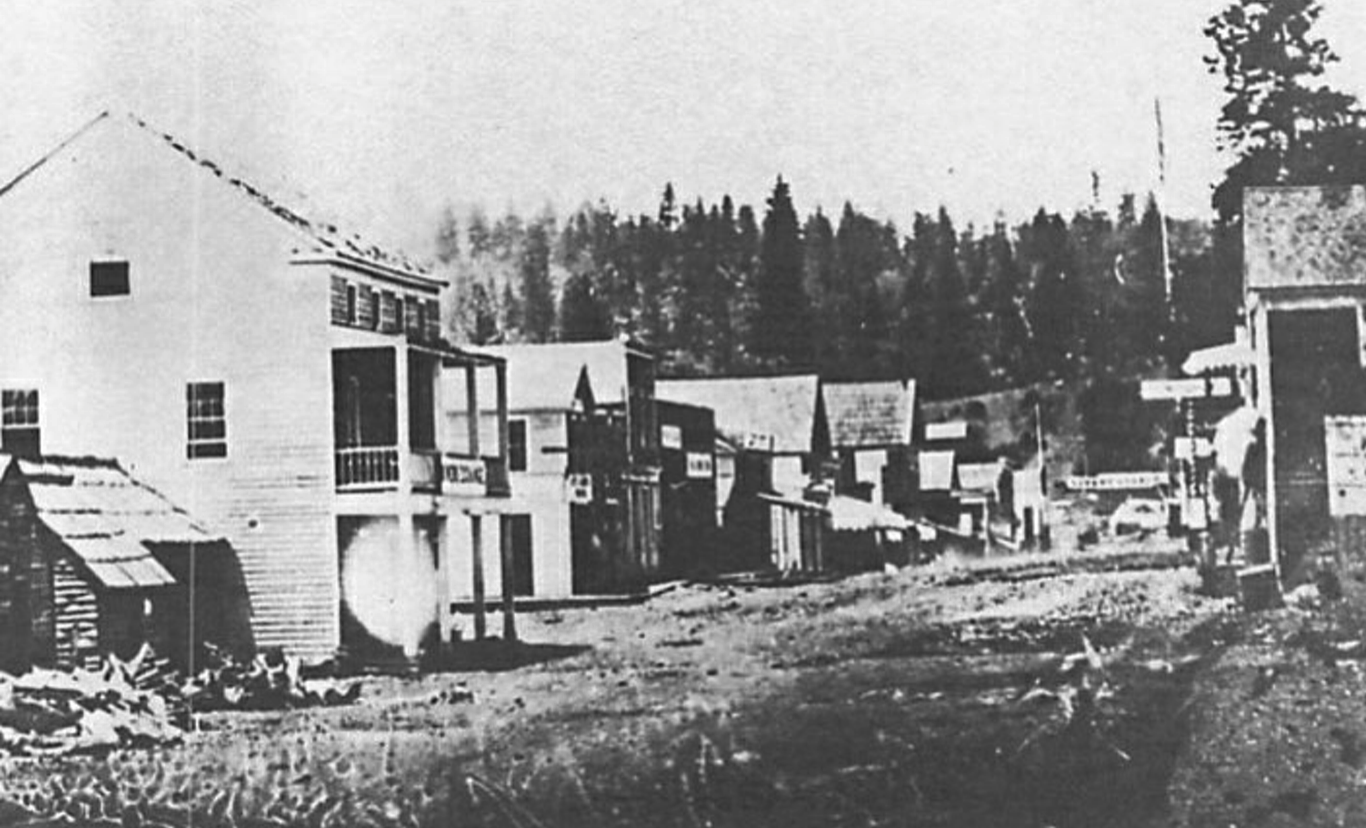15.1. A Little Bit About Michelson#
Faced with a difficult situation, he did what any mid-19th century 16 year old would do: he boarded the brand new Transcontinental Railroad at Oakland Land Wharf in San Fransisco and went to Washington, D.C. to see the president. Albert was nothing, if not persistent.
Albert Michelson (1852 - 1931) was born in Poland and as a two year-old with his merchant-class family moved to the United States. The Michelsons were adventurous — facing hardship in Poland, they resolutely traveled to the wild west (a harrowing passage through lawless and diseased Panama) and became store-owners in various mining communities in California and Nevada, settling in the nearly untamed Murphy’s Camp, California. A bad cowboy movie, lawless, gold-rush western town. His mother exported Albert to relatives in San Francisco where excelled in high school. College was in his future but his path was unusual: he applied in a competition to the relatively new United States Naval Academy at Annapolis, Maryland and was rejected. Hence, his audacious trip to see President Grant who received him at the White House and eventually personally admitted him (above the prescribed number of cadets) to Annapolis as a midshipman in 1869. He graduated and did his two years at sea and returned to the Academy as an instructor. He always joked that he was probably illegally a student at the Naval Academy.
He fell into measuring the speed of light as a laboratory exercise for his students. This had only been measured on Earth 15 years earlier when Léon Foucault at the Paris Observatory created a clever apparatus involving a precisely measured rotating mirror to do so. Foucault found \(c= 313,000,000\) m/s with a precision limited by the length of the light path in his instrument. It was Foucault’s result that clued Maxwell into the fact that he’d found a model of light that worked.
This was the technique that Michelson adapted for his midshipmen students and by 1879, he’d improved on the results by a factor of 20 finding \(c=299,910,000 \pm 50,000\) m/s. (He never quit. In 1924 he improved this to \(c=299,796,000 \pm 4,000\) m/s with a light path stretching across the hills outside of the Hale Observatory near Pasadena.)
The rest of Michelson’s life was consumed by making precision instruments to measure various features of light. He was the King of Optics – the master experimentalist in the measurement of precision optical phenomena leading to heroically precise techniques to measure \(c\) to very high precision. His expertise allowed for a leave of absence from the Navy and the opportunity to study in Germany for a while and to return to making increasingly better measurements of \(c\). He was working on such a measurement using a mile-long evacuated tube when he died in 1931.

Michelson was notoriously stern and difficult (although he was an accomplished artist, musician, tennis player, and billiards player). He also led an interesting life. His first wife tried to have him committed and a maid sued him for abusive solicitation. He once had an argument about an experiment with a colleague in a hotel lobby that drew a crowd, maybe because they were loud and maybe because Michelson was still in his pajamas. He won the Nobel Prize in 1907, not for his most famous measurement of zero, but for his exquisitely precise instruments and the collection of scientific measurements that he made with them.